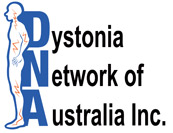Chronic neck pain
Symptoms
In cervical dystonia, the neck muscles contract involuntarily. If the contractions are sustained, they may cause abnormal posture of the head and neck. If the spasms are periodic or patterned, they may produce jerky head movements. The severity of cervical dystonia varies from mild to severe. Movements are often partially relieved by a ‘sensory trick’ (also known as geste antagoniste) such as gently touching the chin, other areas of the face, or back of the head.
Cervical dystonia may begin in the neck and spread into the shoulders, but the symptoms usually plateau and remain stable within five years of onset. This form of focal dystonia is unlikely to spread beyond the neck and shoulders or become generalized dystonia. Occasionally, people with cervical dystonia develop other focal dystonias.
The usual treatment for cervical dystonia is injection of muscle relaxants, which in many cases can substantially improve symptoms.
A number of Neurologists at Neurology Network Melbourne specialise in these injections:
